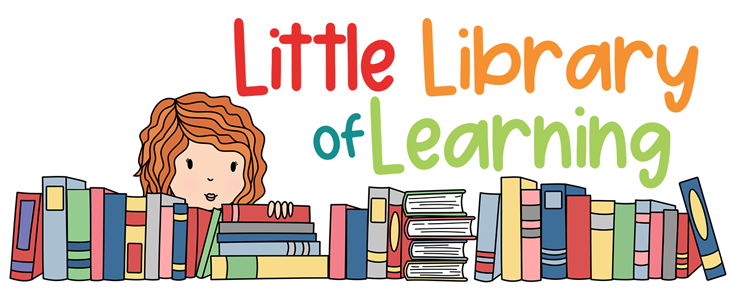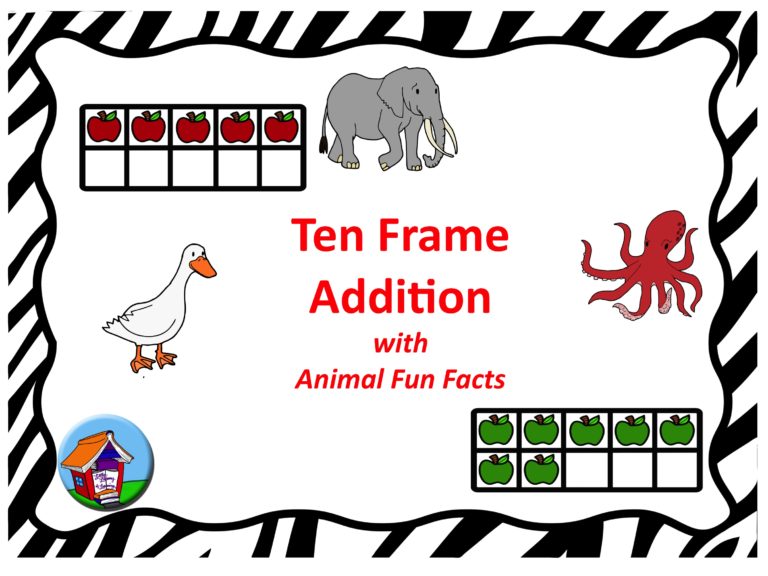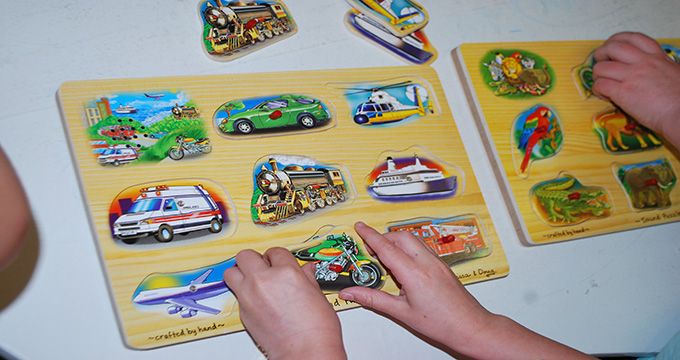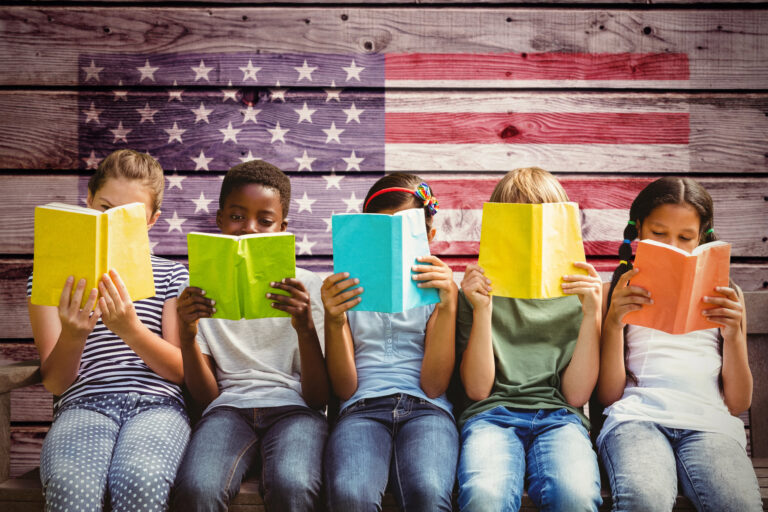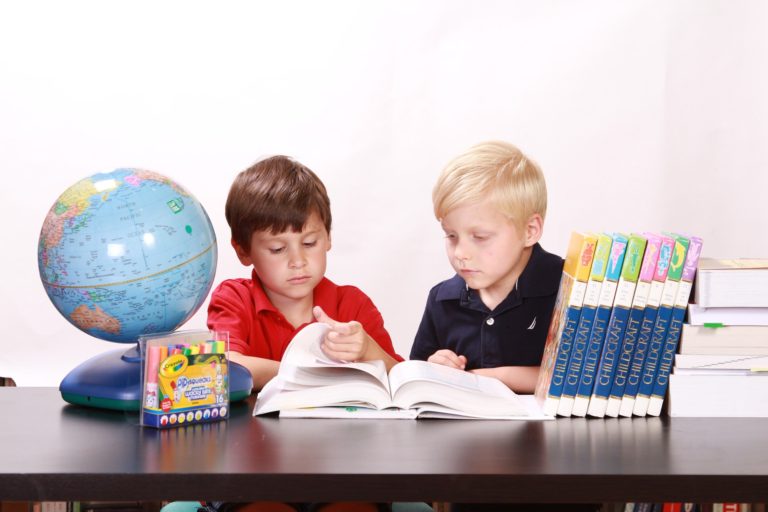How Do You Support Reading Comprehension in the Library?
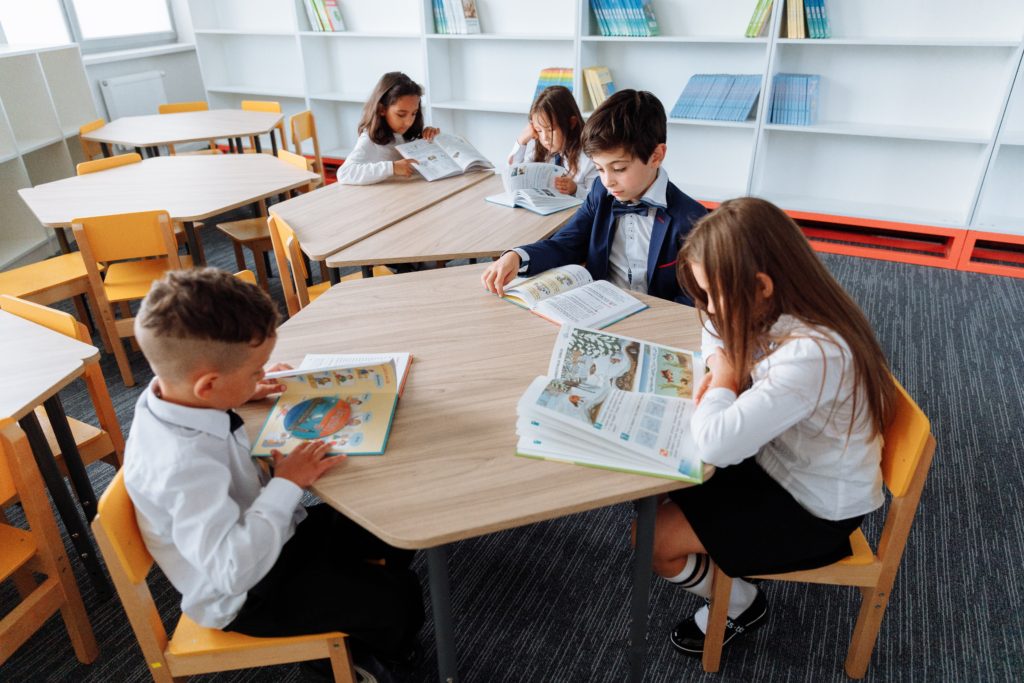
Do you teach reading comprehension in the library? Well, you might think that’s the responsibility of the classroom teacher or reading specialist. But, since librarians are all about reading, it makes sense that we also support skills such as reading comprehension.
Do you want a free game, Flipping Dewey Flapjacks? Click HERE.
Make a Game of Reading Comprehension
If you have younger elementary school students, I assume you do read-alouds of picture books. But it is equally important to read to upper grades. For one thing, you can model fluent reading, giving correct emphasis to phrases and pronouncing tricky words. All kids love to be read to. It takes the pressure off them, as well. You certainly ask the students about the story: what was the setting, who are the characters, what was the problem and solution. And, you probably quiz them about the vocabulary in the story. Maybe even encourage them to make inferences or identify author’s purpose. I frequently read nonfiction, as well as fiction to my students. It helps them build background knowledge. There are so many skills involved in reading comprehension.
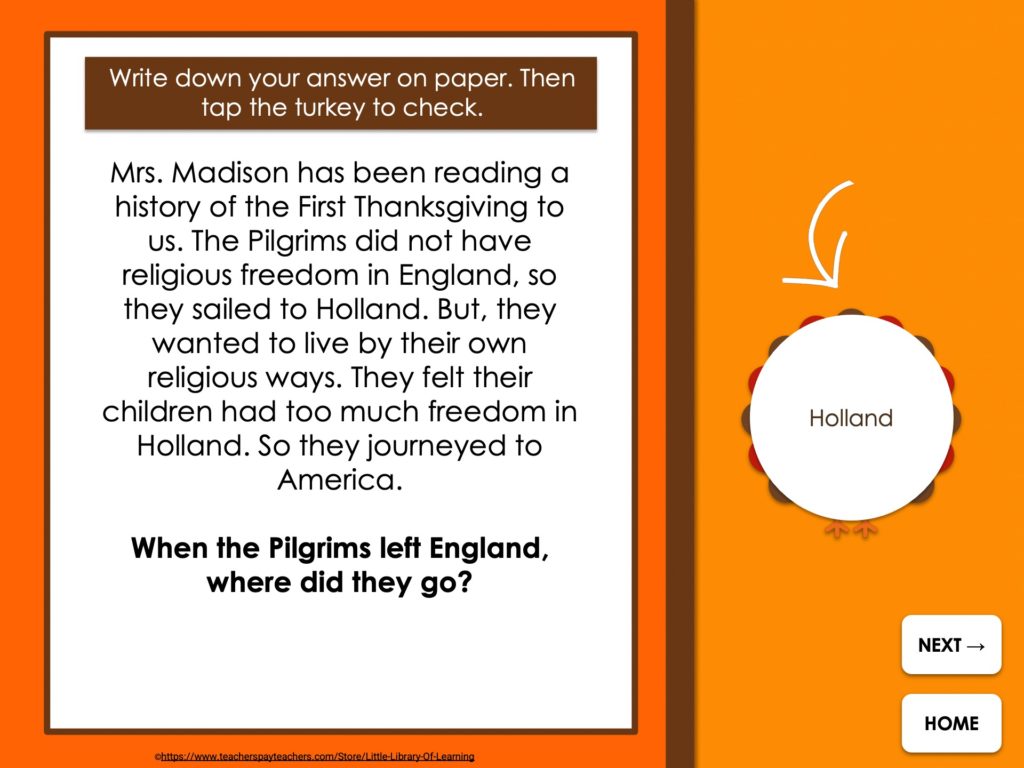
You might read a book about the First Thanksgiving and ask “right there” questions, such as “When the Pilgrims left England, where did they go” (not America!). Or, why did they leave? The usual, Who, What, When, Where, How questions.
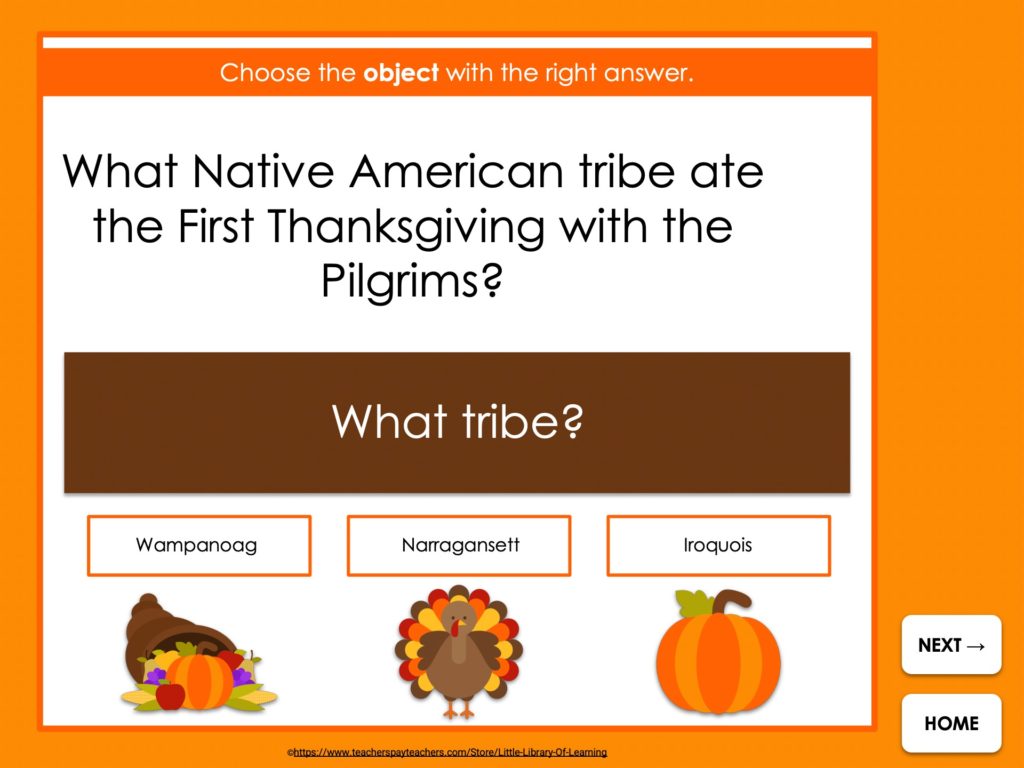
Follow up questions could ask students to recall details from the text: What tribe did the Pilgrims eat Thanksgiving dinner with? Who was Squanto? Who was the longest serving governor of Plymouth Colony?
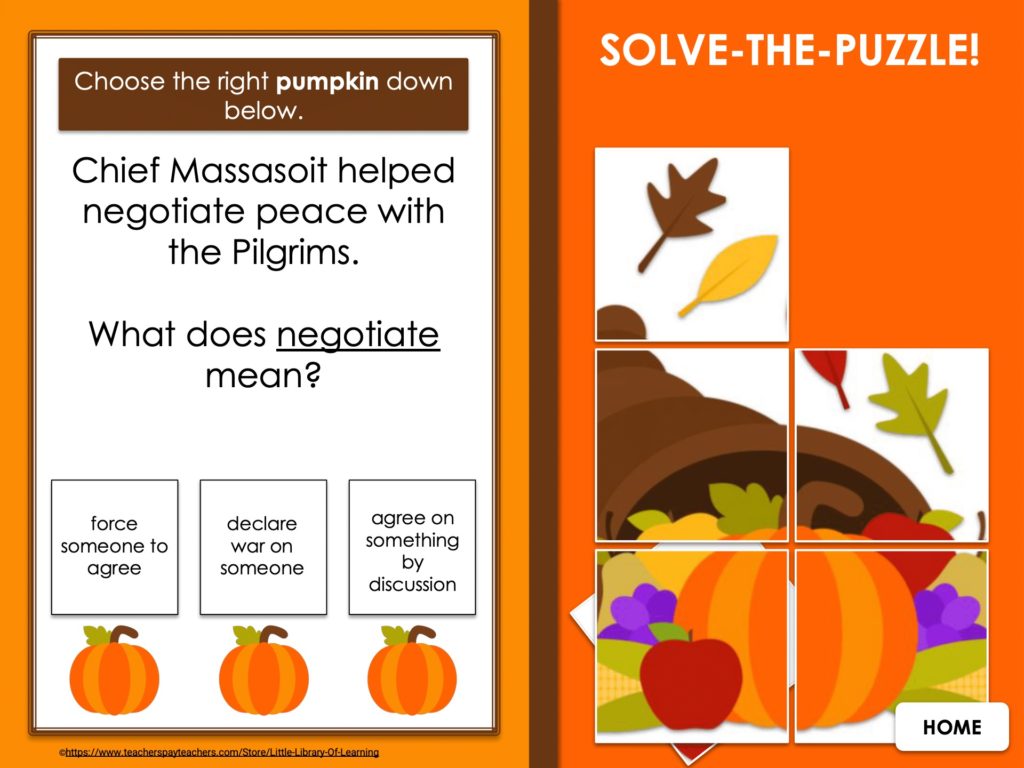
If you would like to try a Thanksgiving themed reading comprehension activity, in Google Slides, click the link below. The questions are self-checking. When students tap on the right answer, a pumpkin or scarecrow spins around, or a series of questions results in a puzzle image of a cornucopia coming together. It’s a fun way of teaching reading comprehension in the library!
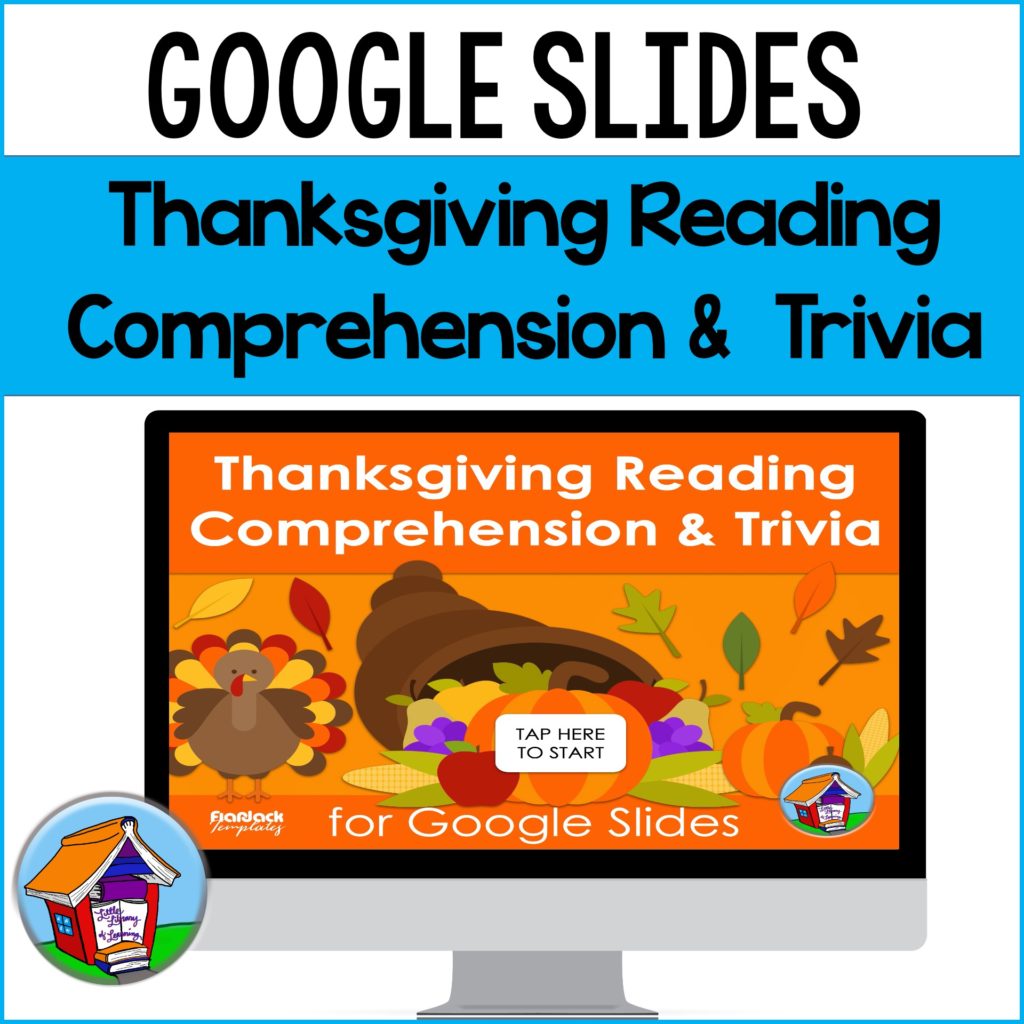
Classroom teachers don’t cover a subject once and leave it alone. Nor should you. Kids become better readers by constantly practicing reading. They can also complete reading comprehension activities during different seasons. Get a set of year-long lessons by clicking the link for this product.

Language Arts such as Synonyms and Antonyms Help Reading Comprehension
Do you still teach reference sources (I don’t say reference “books,” because you can let the students use online dictionaries and other websites). There are a lot of fun vocabulary activities you can do in the library, which support reading comprehension. My students love looking up words in the dictionary, or synonyms in the thesaurus. For more about using the dictionary, click here:
Do Kids Still Need Dictionaries
They should develop the skill of determining the meaning of an unfamiliar word from its context. But, I also play fun word games with my students on the Smart Board or in Google Slides. Recognizing synonyms, antonyms and homophones contributes to reading comprehension. In this bowling themed Google Slides deck, kids identify the synonym or antonym of an underlined word. For every correct answer, the bowling ball rolls nearer the pins!
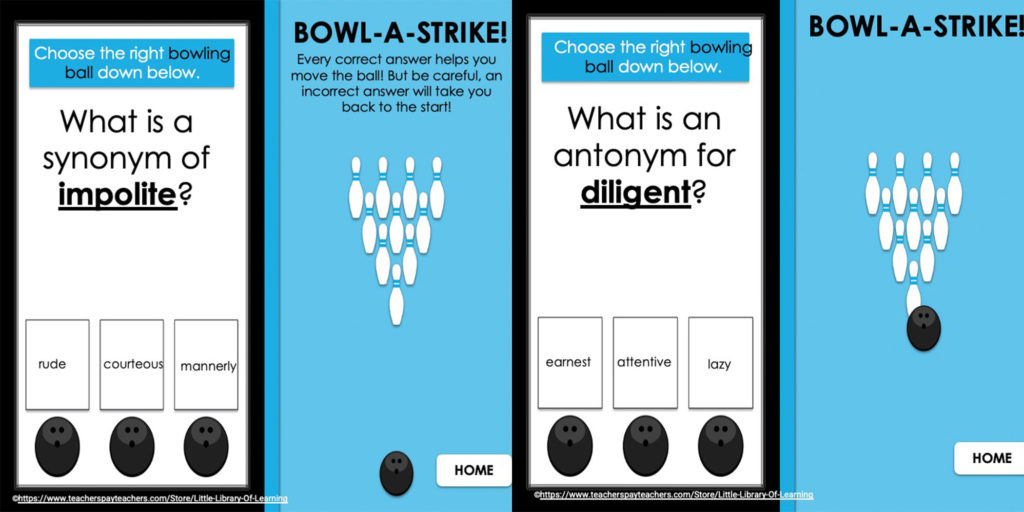
So, there are so many ways that librarians can support reading comprehension in the library. Since we can usually be creative with our curriculum, we can also have more fun!
Sign up for email and blog updates and receive this free activity as a thank you!
